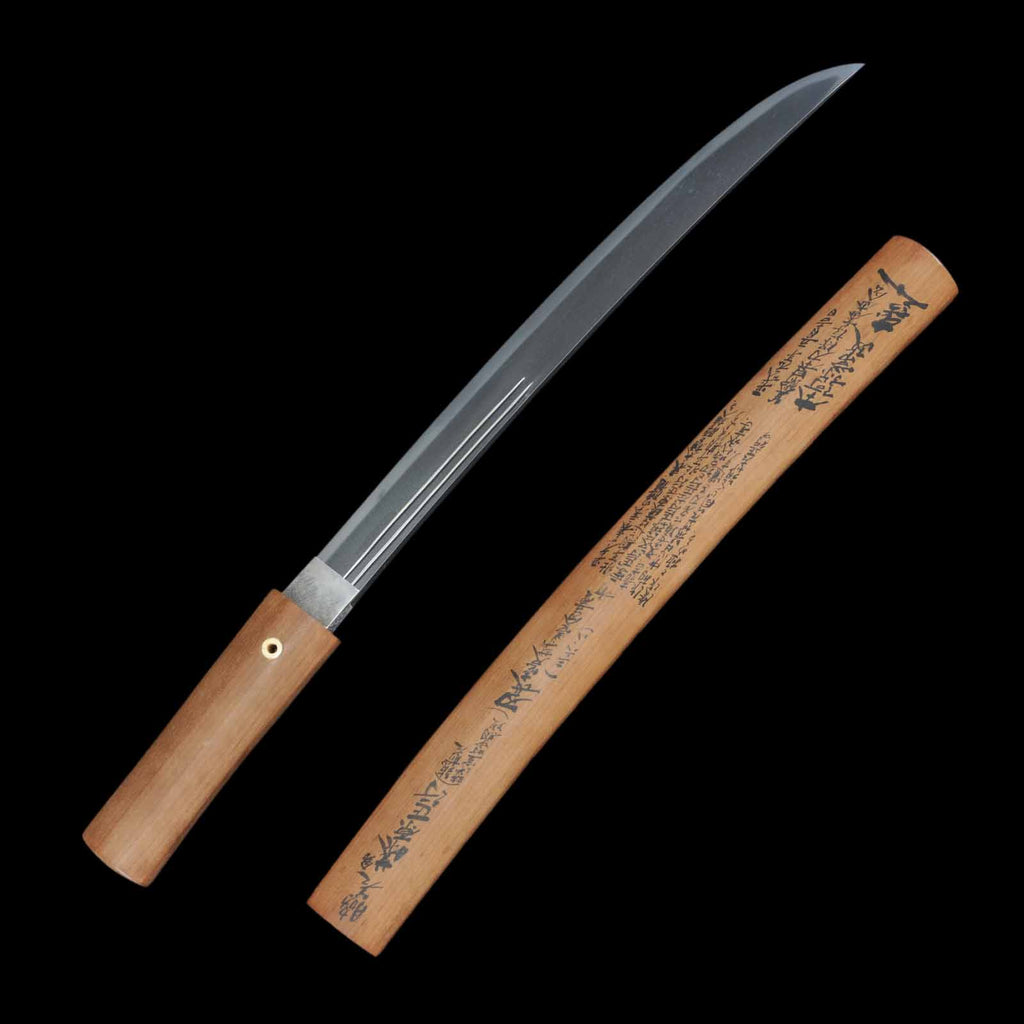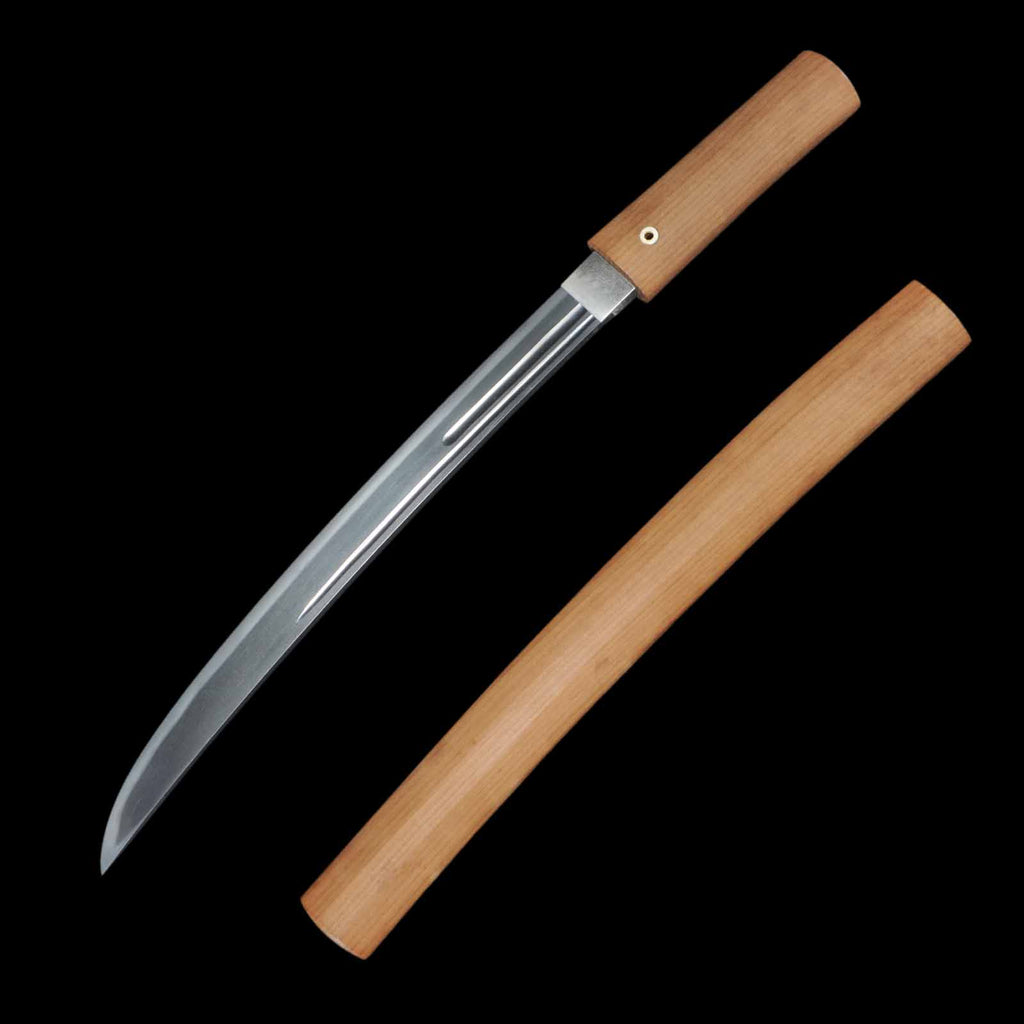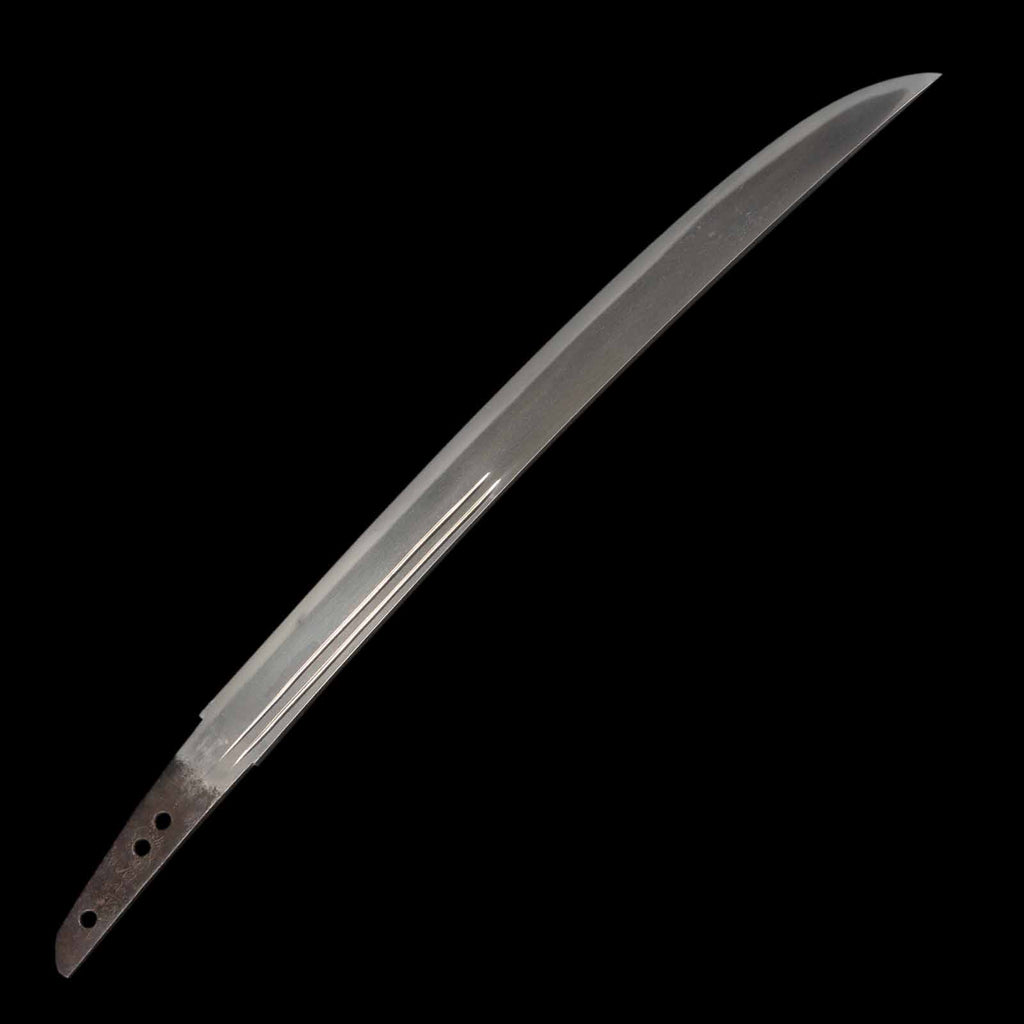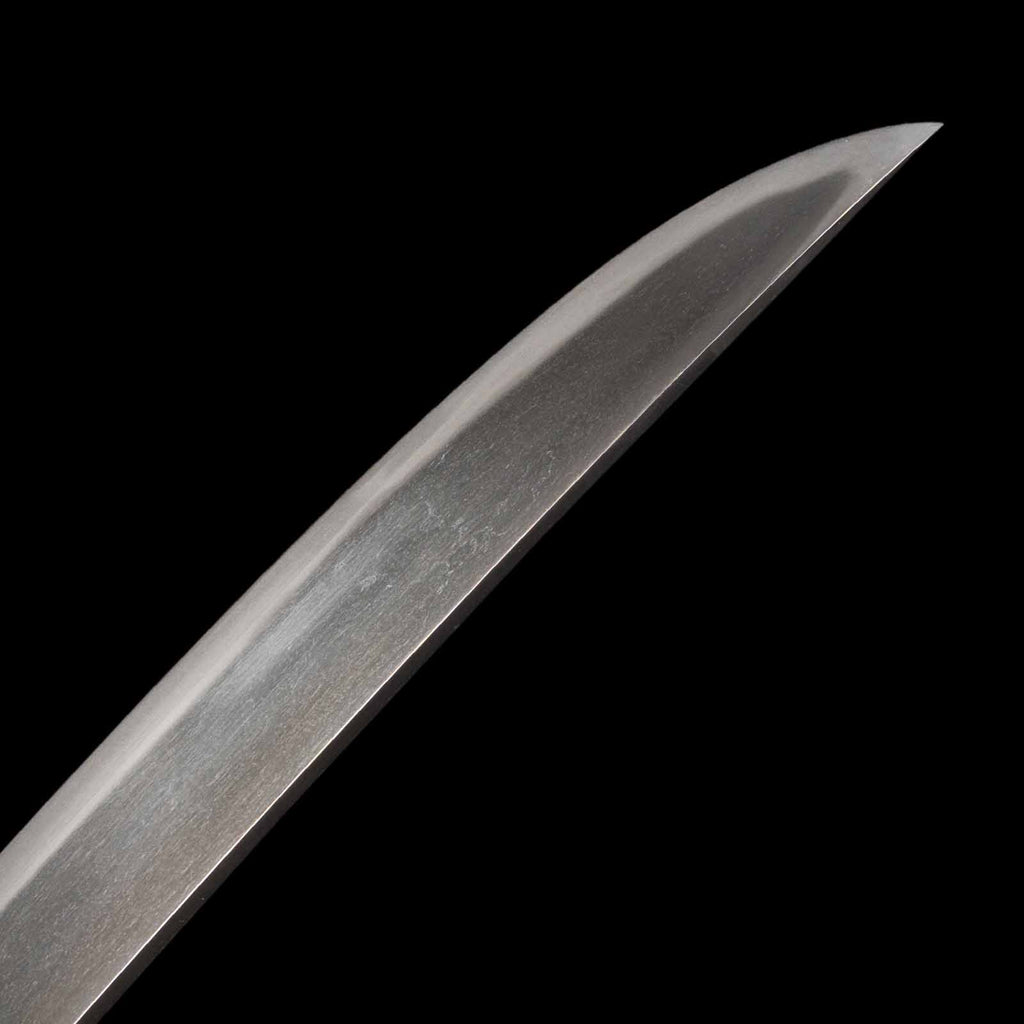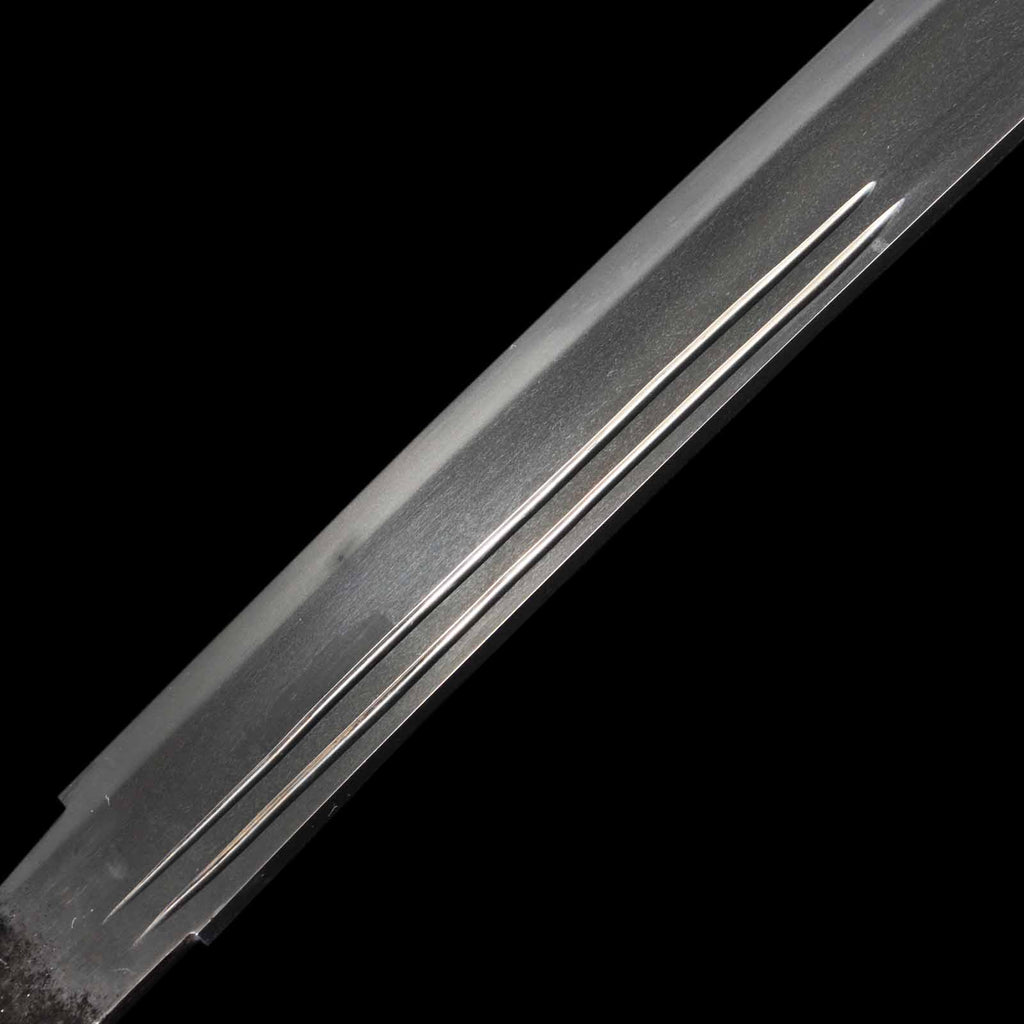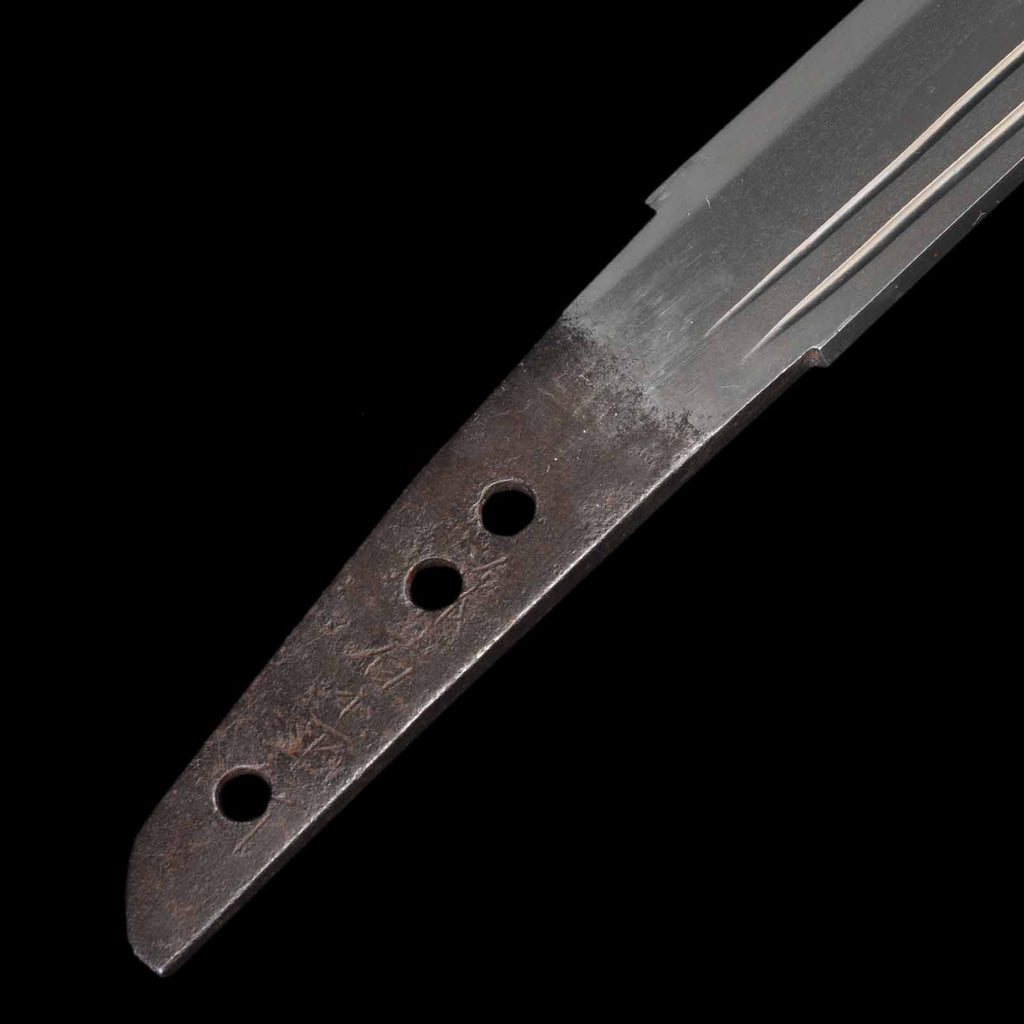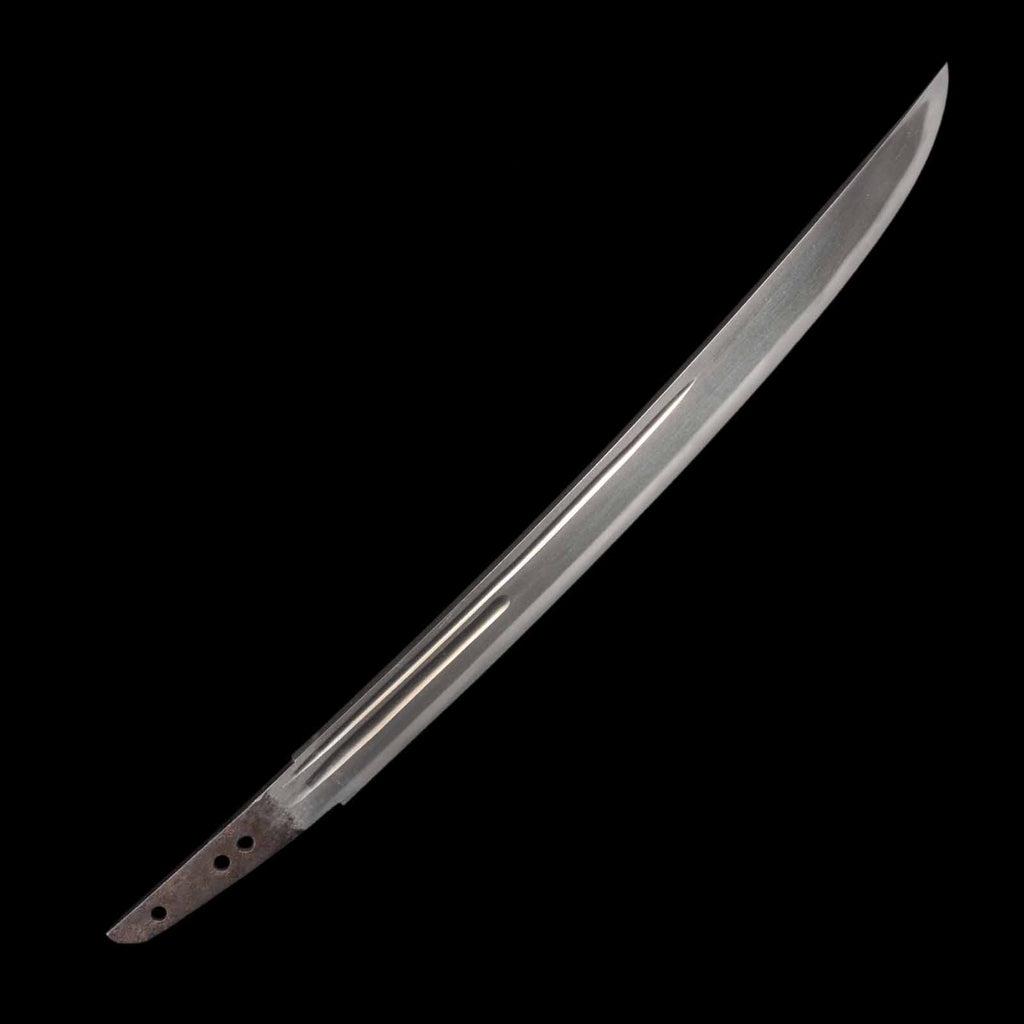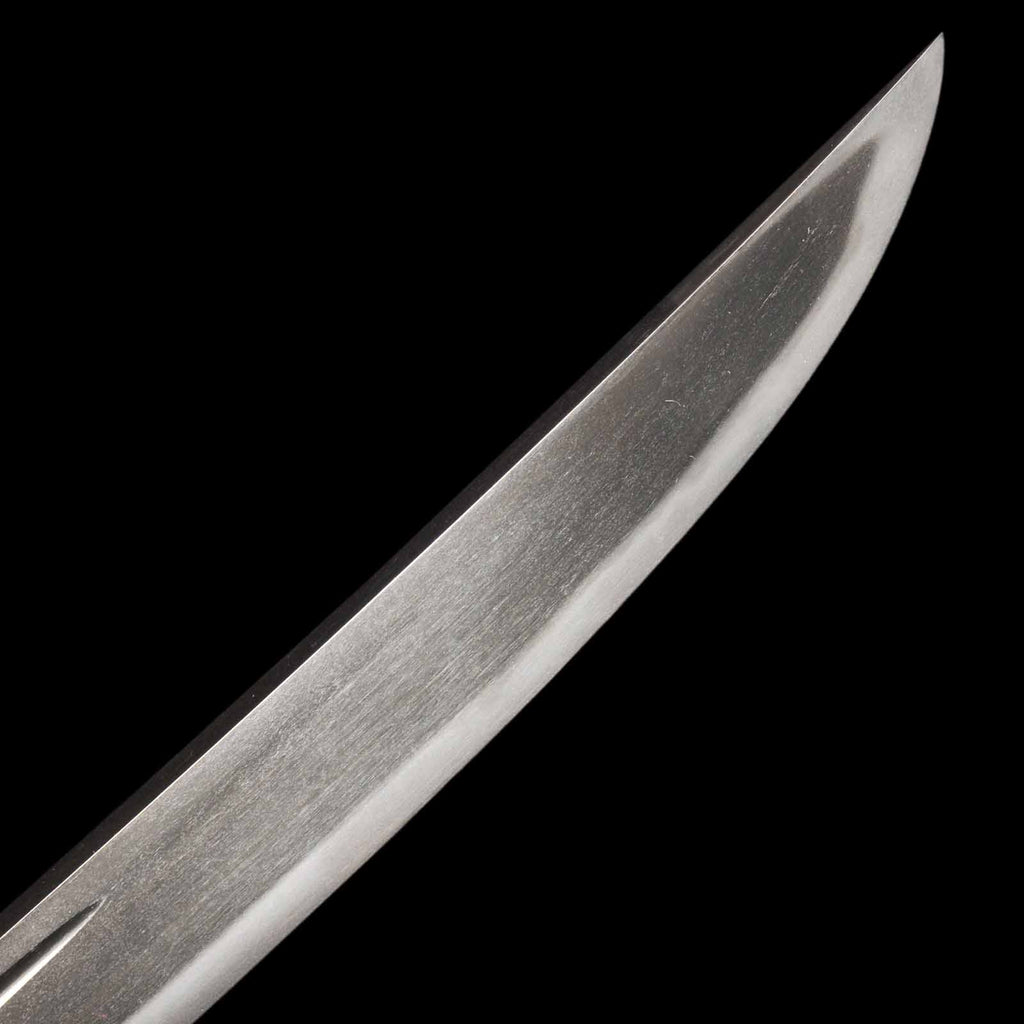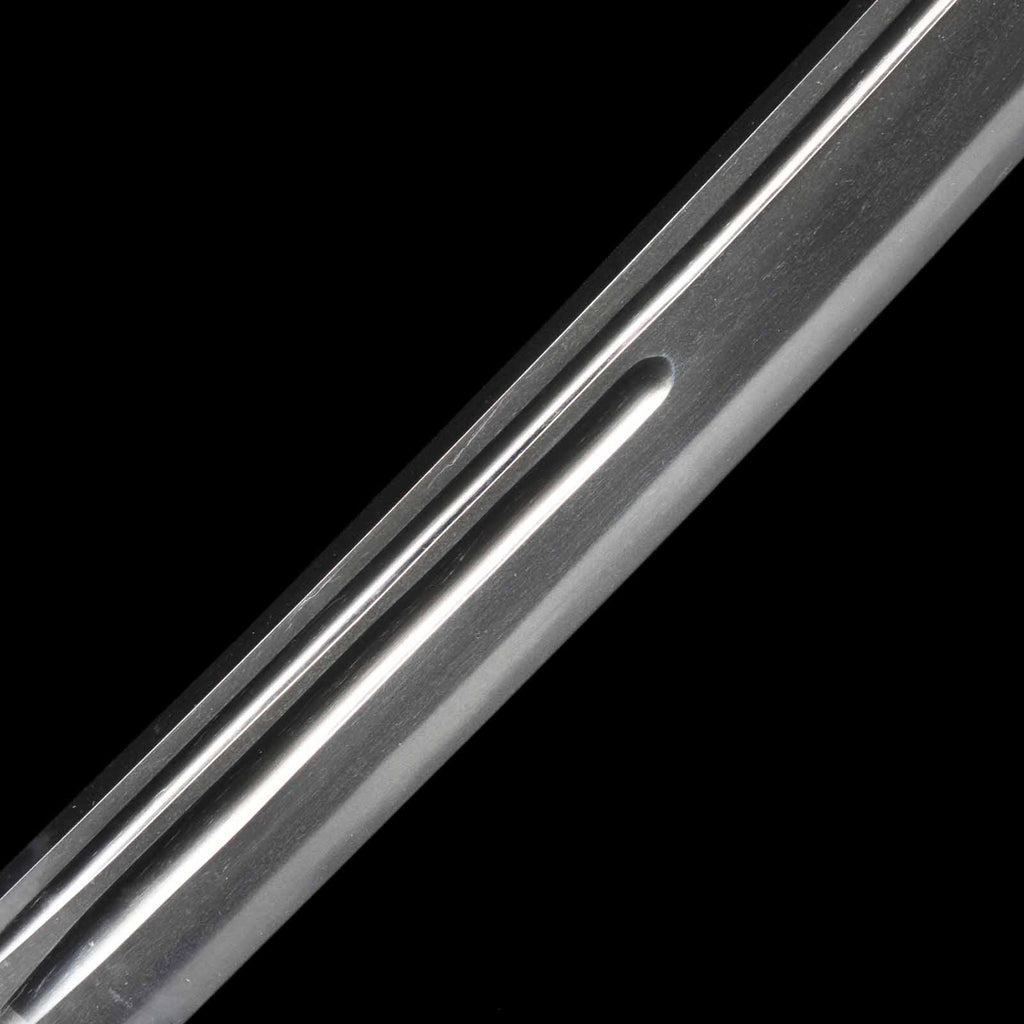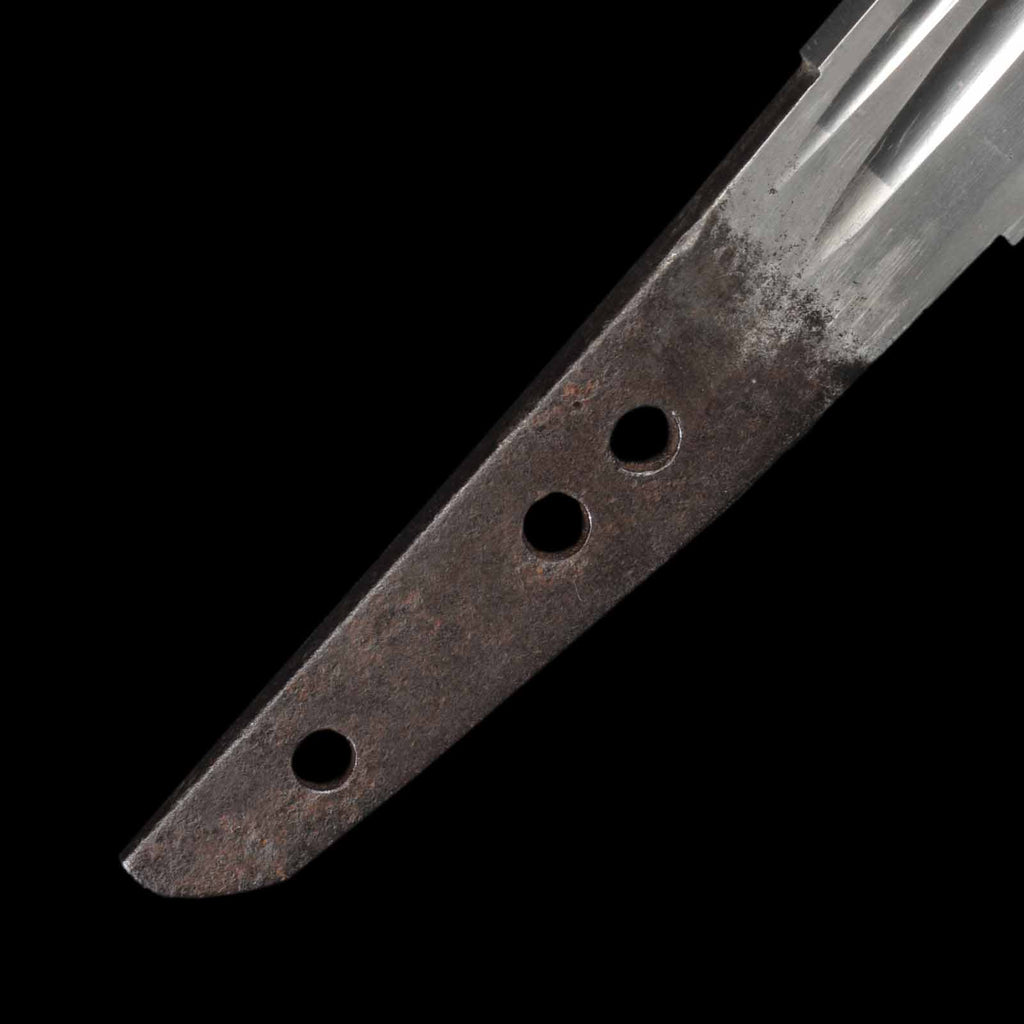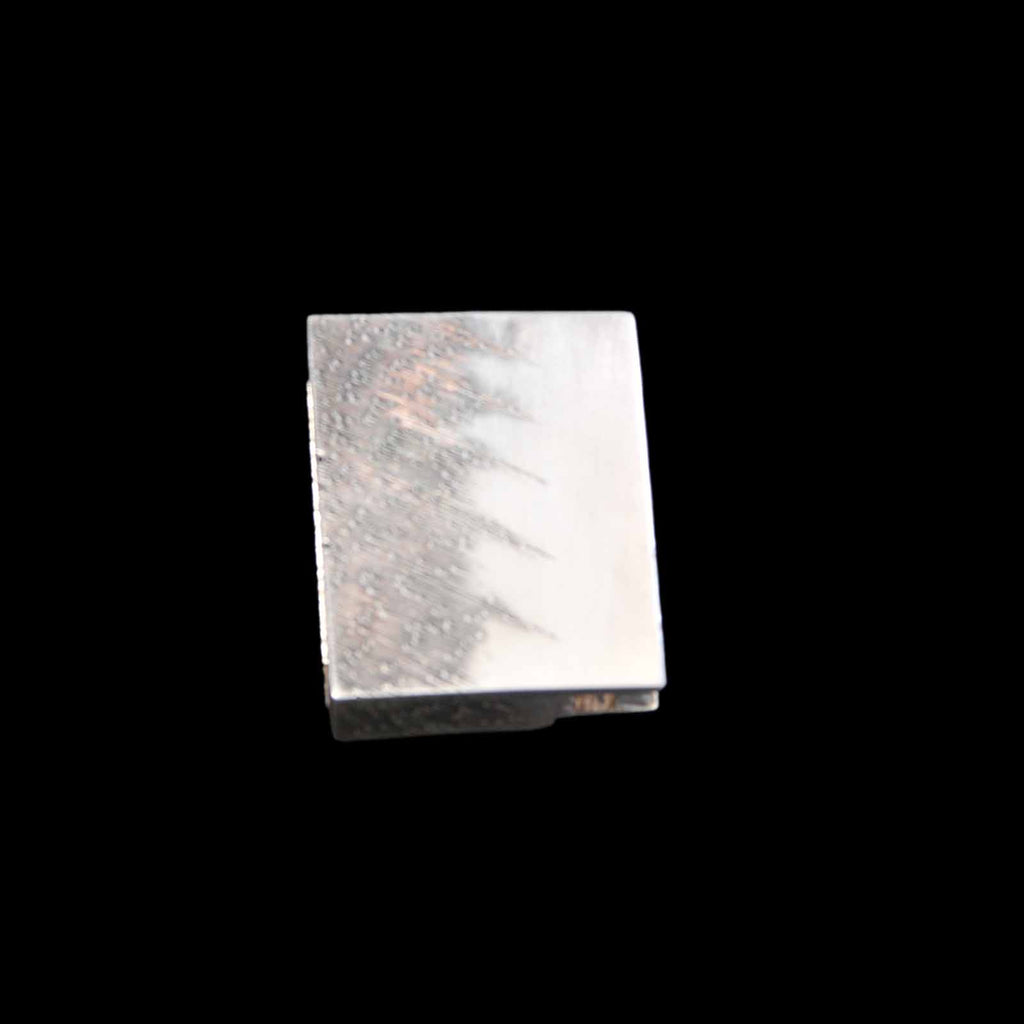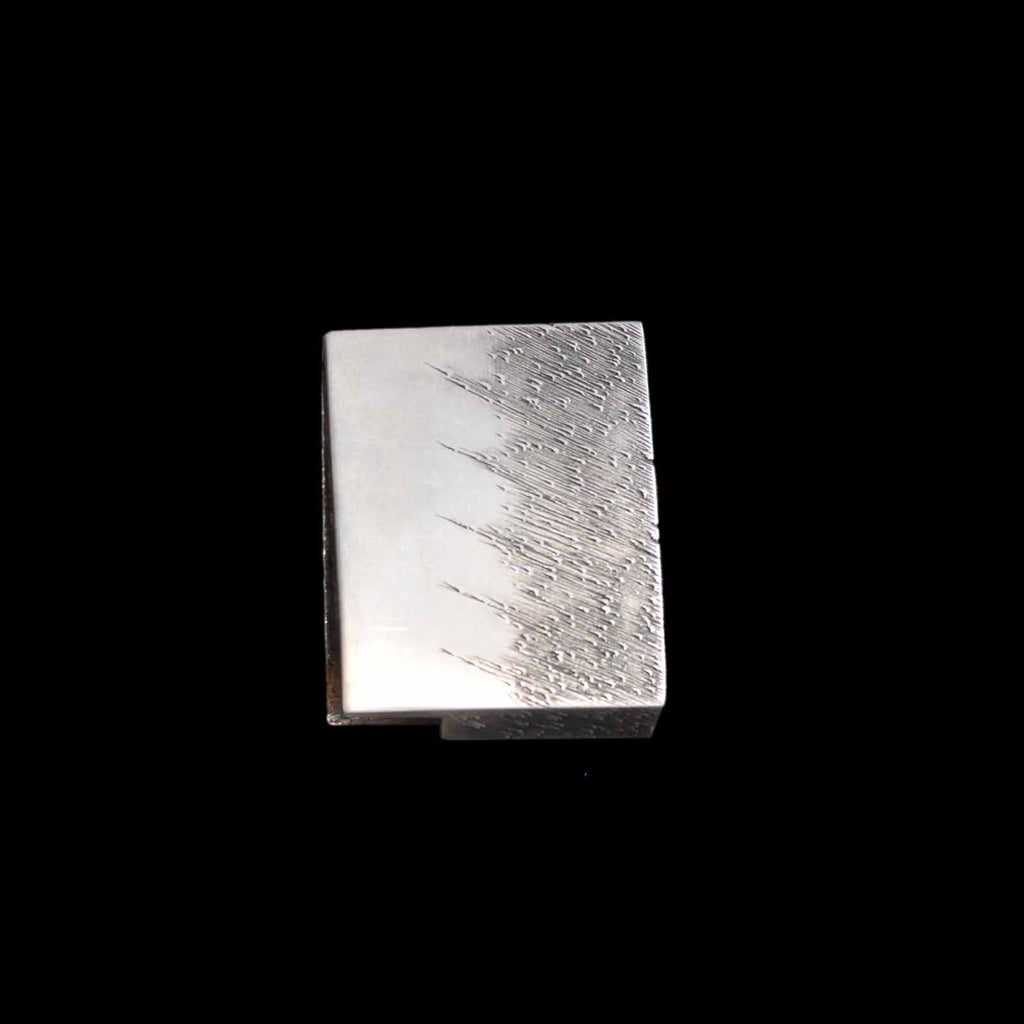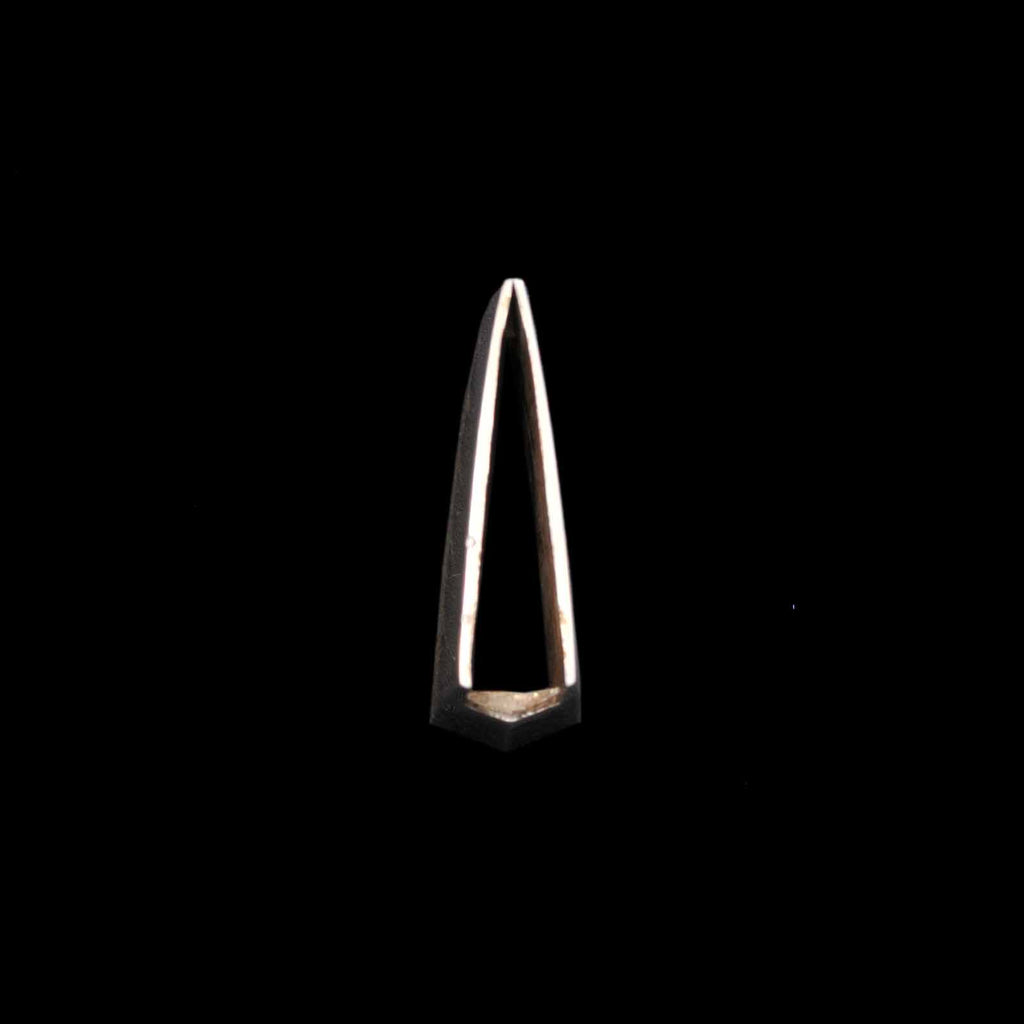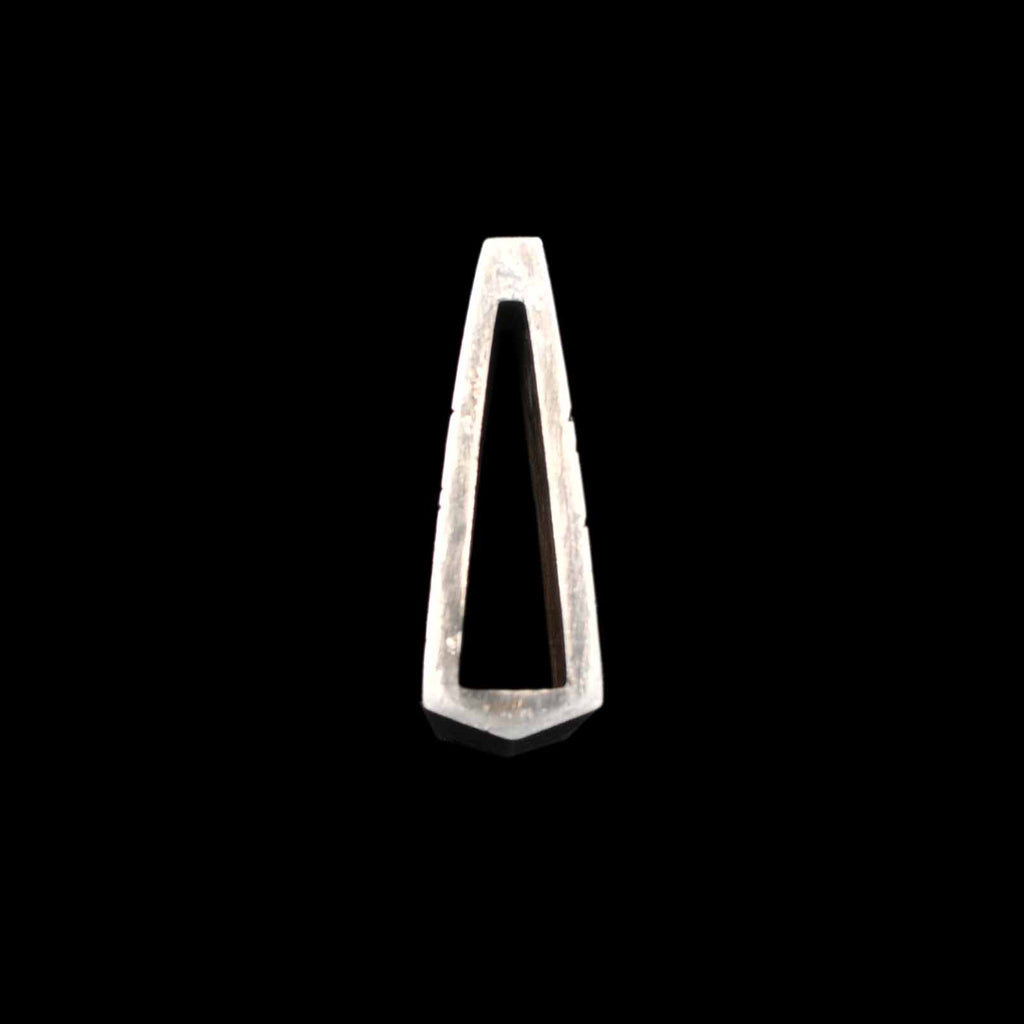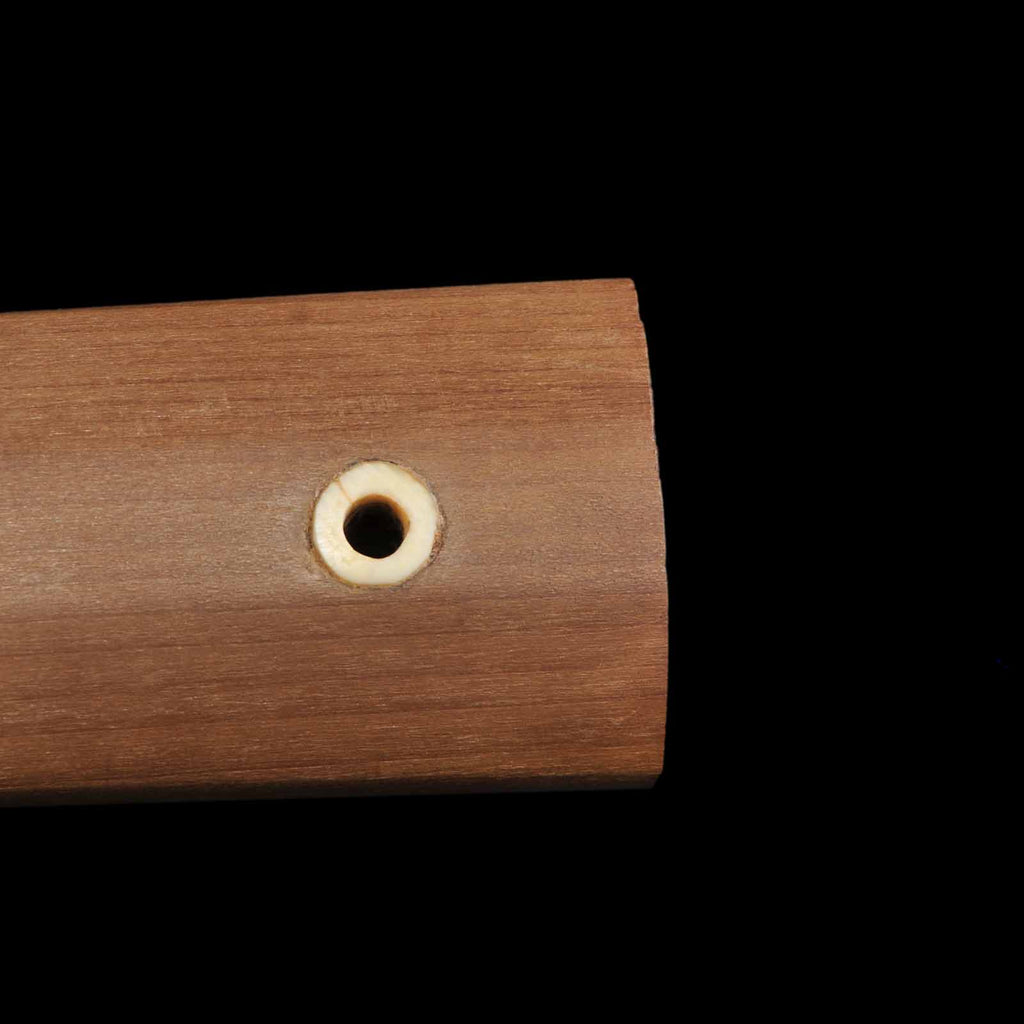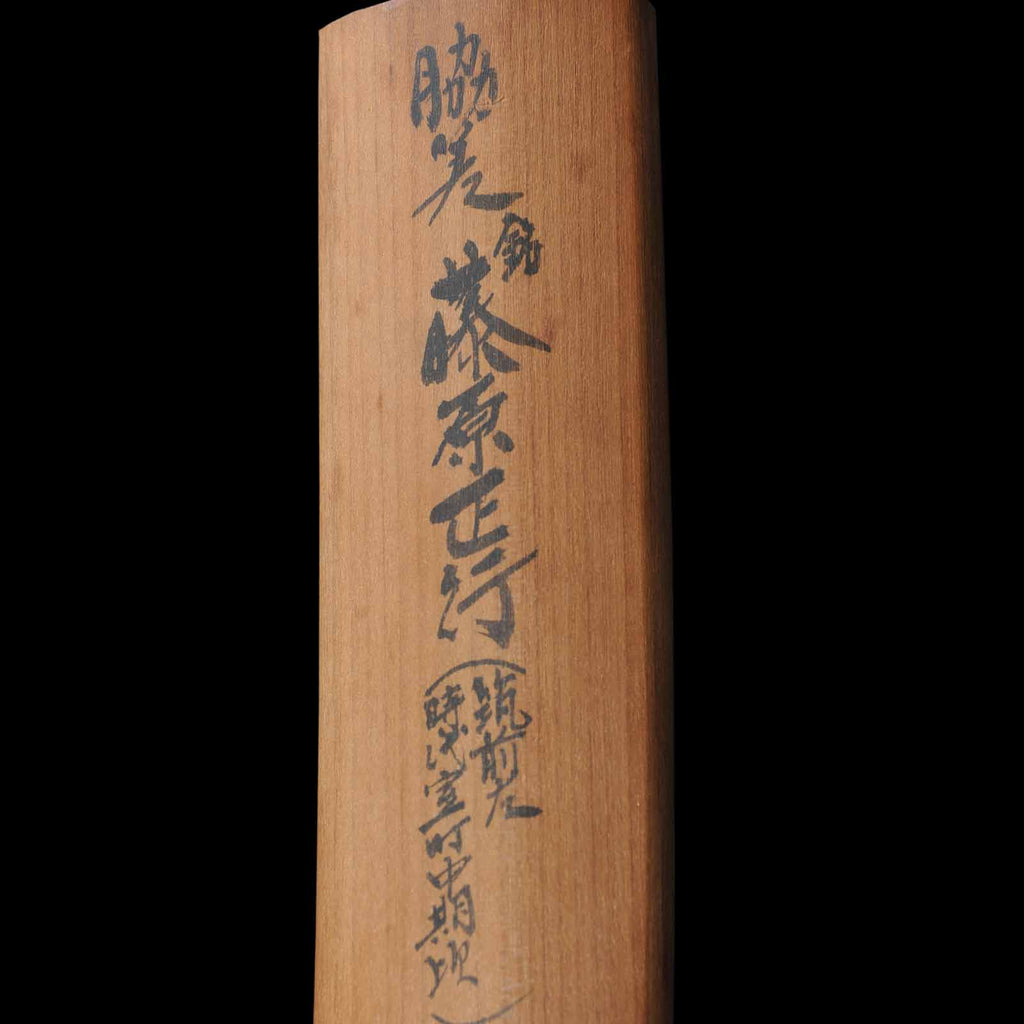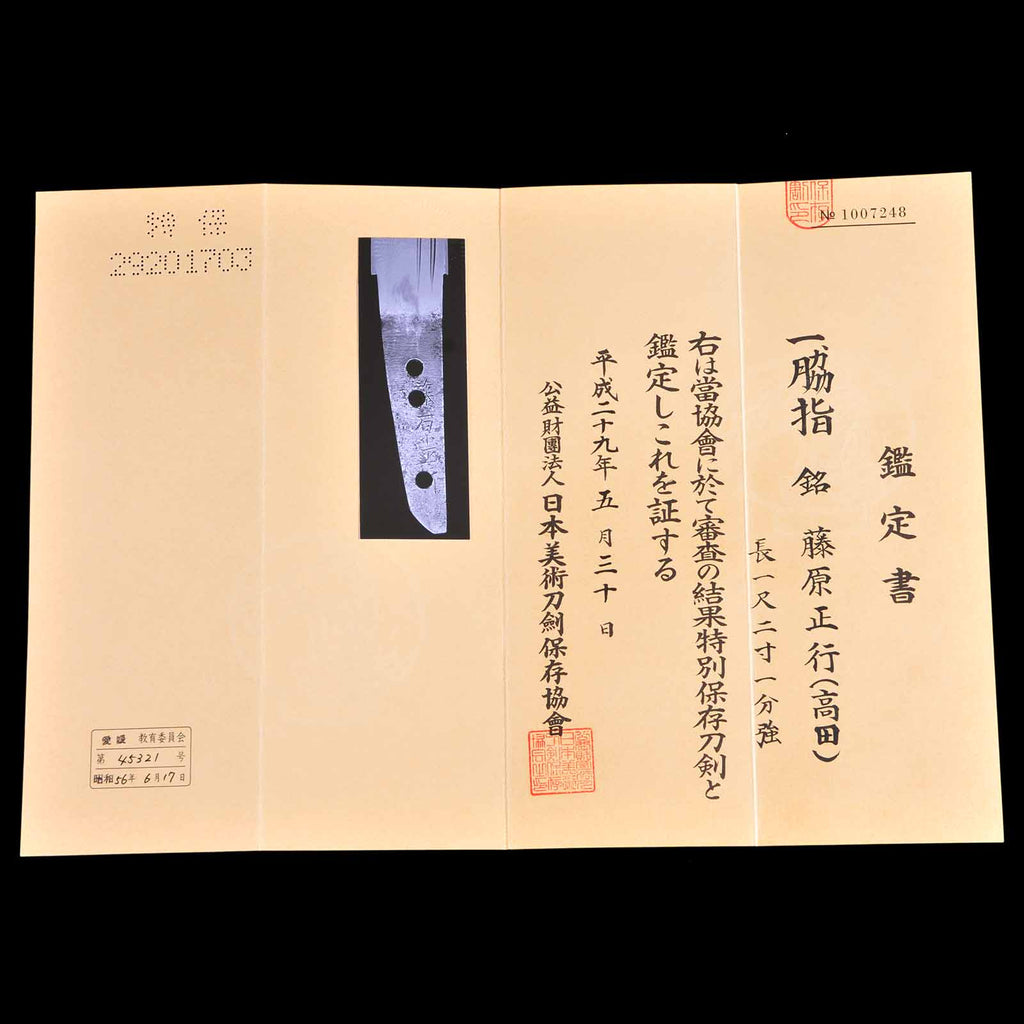Wakizashi - Masayuki - NBTHK Tokubetsu Hozon Certificate - Shirasaya Koshirae - Suriage Nakago - Shinto Era - Ehime 45321
This magnificent piece is a tokubetsu hozon wakizashi with a Hon'ami family sayagaki.
The condition of the blade is extremely well preserved, as befits a tokubetsu hozon, with no flaws, rust, or chips. The hada is well polished itame with jinie. The hamon is a notare-like suguha with tight nioikuchi, active ashi and yo, and sunagashi. The name “Fujiwara Masayuki Eis engraved on the nakago.
Masayuki lived in the Takada region of Bungo Province and was the son of Fujiwara Saneyuki. He flourished for several generations under the same name from the Keian period in the Edo period. Bungo-Takada swords had a reputation for cutting well and were already popular even during the Edo period.
In 1989, the sayagaki by Tsunemasa of the Hon'ami family, publisher of numerous books on Japanese swords, was applied to the shirasaya. Because of the extremely good condition of the sword and its exceptional value for posterity, the Society for Preservation of Japanese Art Swords issued a certificate of authenticity for this piece in May 2009, recognizing it as a tokubetsu hozon.
The sword is so beautiful that it is hard to believe that it was made in the Edo period, and it is a gem that any Japanese sword fan should own.
- Blade length: 36.8 cm
- Curvature: 0.7 cm
- Number of Mekugi hole: 3
- Motohaba: 29.8 mm
- Motokasane: 6.4 mm
- Signature: Fujiwara Masayuki(front)
- Era: Shinto
- Structure: Hira-zukuri, Iori-mune
- Jigane: Itame
- Hamon: Suguha
- Boshi: Massugu Haitte O-maru ni Kaeru
- Weight(blade only): 330 g
- Nakago: Suriage
- Koshirae: Shirasaya
- Original Registration No.: Ehime 45321
Please contact us if the katana you are looking for is not listed here.
